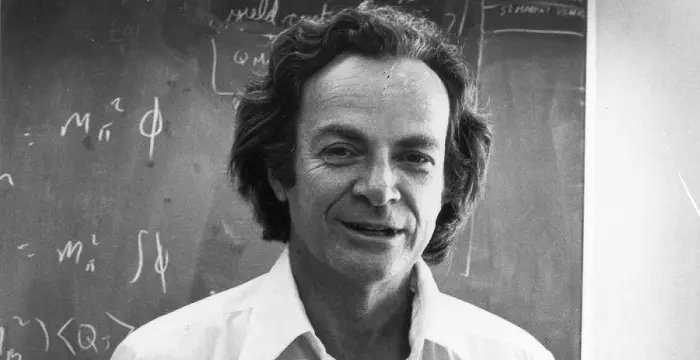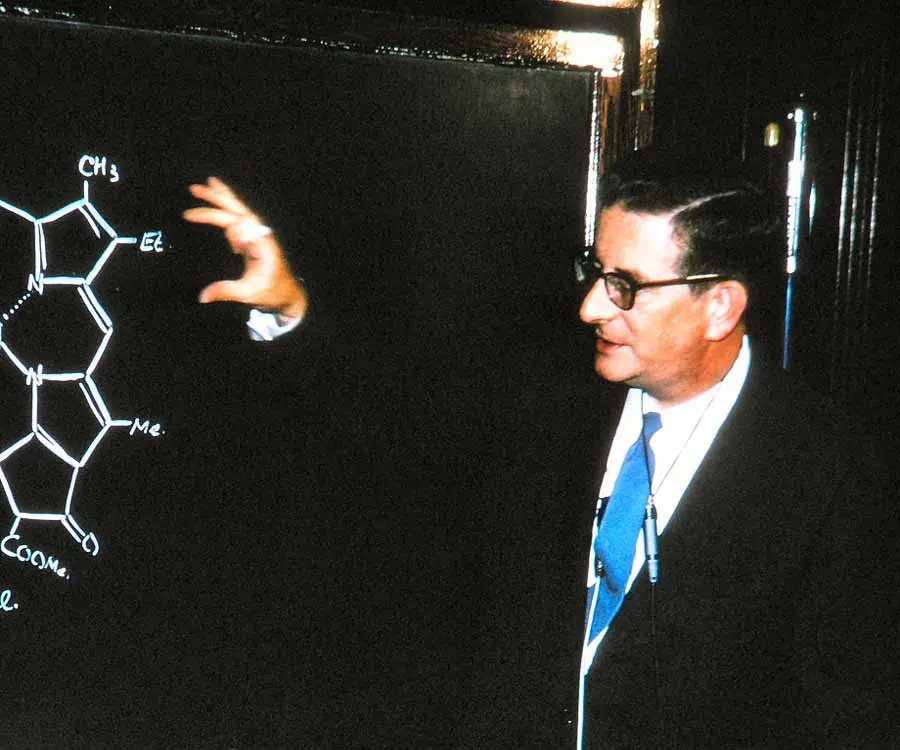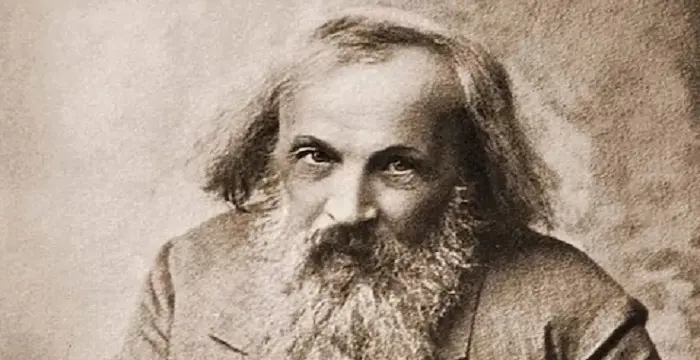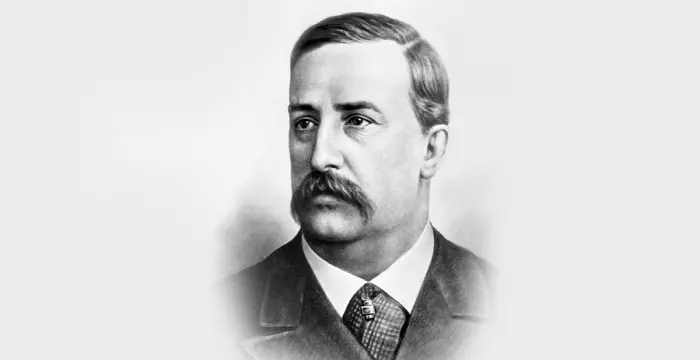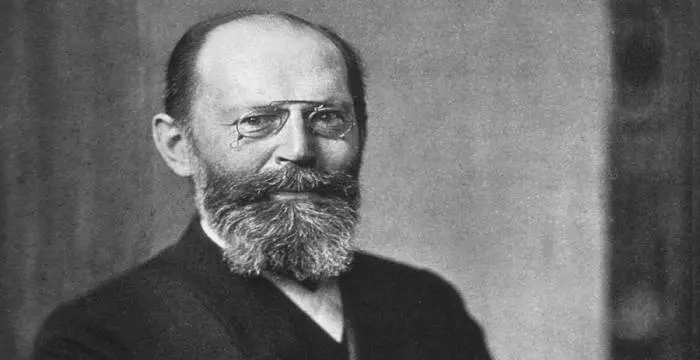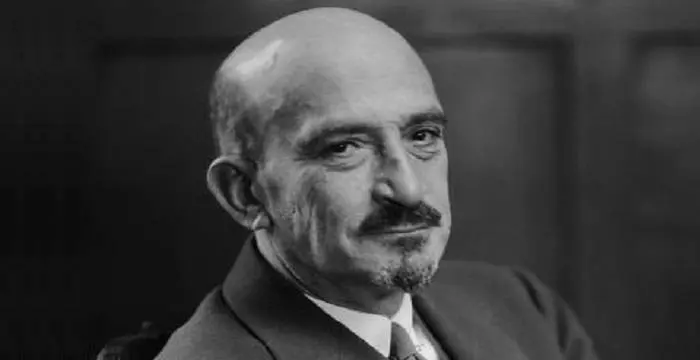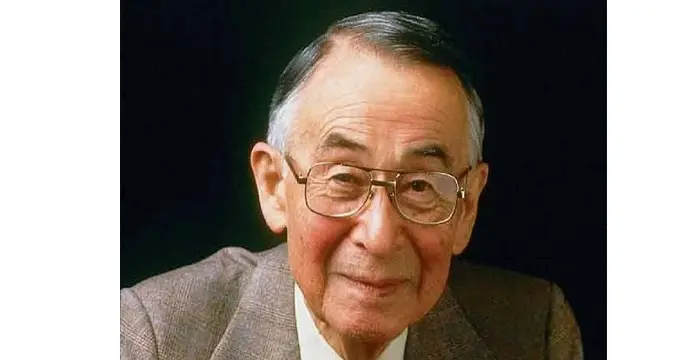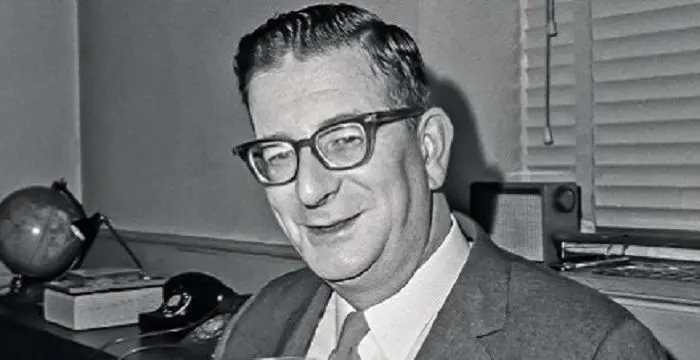
Robert Burns Woodward - Scientists, Career and Personal Life
Robert Burns Woodward's Personal Details
Robert Burns Woodward was a Nobel Prize winning American chemist known for his work on complex natural products
| Information | Detail |
|---|---|
| Birthday | April 10, 1917 |
| Died on | July 8, 1979 |
| Nationality | American |
| Famous | Massachusetts Institute Of Technology, Scientists, Chemists, Organic Chemists |
| Spouses | Irja Pullman (m. 1938), Eudoxia Muller (1946–1972) |
| Childrens | Crystal Elisabeth, Eric Richard Arthur, Jean Kirsten, Siiri Anna |
| Universities |
|
| Notable Alumnis |
|
| Birth Place | Boston, Massachusetts, U.S. |
| Gender | Male |
| Father | Arthur Chester Woodward |
| Mother | Margaret |
| Sun Sign | Aries |
| Born in | Boston, Massachusetts, U.S. |
| Famous as | Organic Chemist |
| Died at Age | 62 |
// Famous Massachusetts Institute Of Technology
Dolph Lundgren
Dolph Lundgren is a famous Swedish actor, film-maker, screenwriter and martial artist. This biography offers detailed information about his childhood, family, personal life, etc.
Joseph E. Stiglitz
Joseph E. Stiglitz is a Nobel Prize winning American economist. Check out this biography to know about his childhood, family life, achievements and other facts related to his life.
Richard Feynman
Richard Feynman was a Nobel Prize winning American physicist who proposed the theory of quantum electrodynamics. To know more about his childhood, career, profile and timeline read on
Robert Burns Woodward's photo
Who is Robert Burns Woodward?
Robert Burns Woodward was a Nobel Prize winning American chemist known for his work on complex natural products. Brought up singlehandedly by his widowed mother, he studied extensively at home right from his childhood. His habit of extracurricular study almost made him lose his berth at the Massachusetts Institute of Technology. Ultimately, he earned both his bachelor and PhD degree from MIT in just four years. His first work, synthesis of quinotoxine, was completed when he was just twenty-seven years old. Later, he worked mostly on determination of structure and synthesizing of different natural products. Until his death, he had around two hundred publications to his name, which encompassed the structural determination of complex natural products, syntheses of medicinal compounds, and his theories that linked quantum mechanics and organic chemistry. One unique point of his strategy was that he maintained a close relation with industry, who often financed his projects. His achievements in the academic field were no less outstanding. He received 26 awards and 45 honorary degrees from established institutions. He also trained around 200 doctoral and postdoctoral students.
// Famous Scientists
Juliane Koepcke
Juliane Koepcke is a German-Peruvian biologist, who was the lone survivor among the 92 passengers and crew of the ill-fated LANSA Flight 508 that crashed in the Peruvian rainforest on 24 December 1971. Know more about her life in this biography.
Henry Cavendish
Henry Cavendish was a theoretical chemist and physicist, renowned for discovery of hydrogen and calculation of the mass of earth. To know more about his childhood, profile, timeline and career read on
Konstantin Tsiolkovsky
Konstantin Tsiolkovsky was a Russian rocket scientist and a pioneer of astronautics. This biography provides detailed information about his childhood, family, personal life, career, achievements, etc.
Childhood & Early Life
Robert Burns Woodward was born on April 10, 1917, in Boston, Massachusetts. His father, Arthur Chester Woodward, died of influenza pandemic one year after his birth. Although his mother, Margaret (née Burns), remarried she was soon abandoned by her second husband. Thus, Robert was brought up singlehandedly by his mother.
He began his education at a public primary school. Later, he was admitted to Quincy High School, a public secondary school located in the suburbs of Boston. However, he was mostly an autodidact and read widely at home.
His thrust for knowledge was such that, in 1928, he procured chemistry journals from Verlag Chemie through the German Consul-General in Boston. Then by the age of fourteen, he bought Ludwig Gattermann’s Practical Methods of Organic Chemistry and performed all the experiments mentioned in the book on his own.
In 1933, Woodward entered the Massachusetts Institute of Technology. Here too, he neglected the formal study courses, concentrating only on chemistry. As a result, he was excluded from the 1934 fall semester.
Not wanting to lose such a bright student, James Flack Norris, an organic chemistry professor, intervened on his behalf. He made sure that Woodward would be allowed to sit for the examinations without attending classes. Accordingly, he was readmitted in the MIT in the fall semester of 1935.
Woodward received his B.S degree in 1936 and his PhD in 1937. His doctoral thesis dealt with estrone, which is a female steroid hormone. The research resulted in the publication of several papers in the Journal of the American Chemical Society in 1940 .
Career
In summer of 1937, Robert Burns Woodward began his career as a post doctoral fellow at the University of Illinois; but within six months, he shifted to the Harvard University as Junior Fellow. He remained with the Harvard University till his death in 1979.
His Fellowship ended in 1938. In the same year, he was accepted as a Member of the Society of Fellow. The position offered him freedom to pursue his research work independently. On the flip side, he needed collaborators to carry on his experiments, which the position did not allow.
Therefore in 1941, he accepted the position of the Instructor of Chemistry. Around this time, Woodworth published a few important papers on the correlation between ultraviolet spectra and structure. It later led to the formation of ‘Woodward’s Rules’.
However, it was not yet sure if he would have any long term engagement at Harvard and so he considered shifting to California Institute of Technology, Pasadena or University of California, Barkley. But, he did not have to make any such move; opportunity came from an unusual source.
In 1942, Edwin Land, the founder and head of the Polaroid Corporation, offered him the opportunity to work on quinine. It was a key ingredient for the production of their light polarizing sheets and films, but its supply was affected by the ongoing Second World War.
In the same year, Woodworth created a chemically simple, light-polarizing replacement for quinine. Afterwards, he asked Land to support him for synthesizing quinine. The work was started in February 1943.
Building on Paul Rabe’s 1908 work, Woodworth and his collaborators completed the synthesis of their key intermediate, quinotoxine, on 10 April 1944. It made him internationally famous and acted as a catalyst in his career.
Also in 1944, Woolworth was appointed as an Assistant Professor at the Harvard University. Subsequently, he began to work on syntheses of patulin (an antibiotic), morphine, protein, and other materials, which had industrial use. In the same year, he also proposed β-lactam formula for penicillin.
In 1946, Woodworth became an Associate Professor, remaining in that position till 1950. During this period, his attention was turned to steroid, on which he had worked as a doctoral student. In spite of his shift in his interest he was able to determine the structure of strychnine in 1947 and patulin in 1948.
In 1950, he became a full professor and in 1951, he was able to synthesize cortisone and cholesterol. At that time, many other scientists were working on the cortisone, vying with each other to be the first to synthesize this ‘miracle drug’; ultimately it was Woodworth, who won the race.
In 1953, he was elected as the Morris Loeb Professor of Chemistry at Harvard University, a position he held till 1960. Also, in 1953, he determined the structure of terramycin.
Next in 1954, he determined the structure of strychnine and lanosterol and also synthesized these two products. His work on strychnine was also done under immense international competition.
Subsequently in 1956, he determined the structure of reserpine and also synthesized the product. It is said to be his first major work, which not only solved the problem of the shortage of raw material, but also led to its industrial production.
From 1958 to 1964, he worked on gliotoxin, ellipticine, calycanthine, oleandomycin, streptonigri, and tetrodotoxin, successfully determining their structure. These works remain a milestone in the field of organic chemistry.
Meanwhile in 1960, he performed total synthesis of chlorophyll. Next from 1962 to 1965, he synthesized tetracycline, colchicine, and cephalosporin C.
In 1963, he became the Donner Professor of Science and at the same time he assumed the dual responsibility of directing the Woodward Research Institute at Basel. Also in 1960s, he worked as Consultant for Polaroid’s development of color photographic processes.
His second major work, which concerned the synthesis of Vitamin B-12, also began in the early 1960s. In this work, he collaborated with Albert Eschenmoser of Zurich. A team of almost 100 students and postdoctoral fellows worked for years on this project before it was synthesized in 1973.
Also in 1973, based on observations made during the B12 synthesis, he and Roald Hoffmann devised rules for elucidating the stereochemistry of the products of organic reactions. It is now known as Woodward-Hoffmann rules. However, he did not stop there, but continued to work till his end.
At the time of his death in 1979, he was working on the synthesis of erythromycin. Apart from his research work, Woodward authored/co-authored more than 200 publications and trained more or less the same number of doctoral or post doctoral students, many of whom went on to become distinguished academics later.
Major Works
Synthesis of reserpine is taken as Woodward’s first major work. Earlier, the natural product was imported from India to be used as sedative. Synthesizing the product has not only made it more readily available, but has also brought in radical changes in the treatment of mental illness.
Synthesizing the complicated coenzyme Vitamin B-12 (cyanocobalamin) is another of his major work. Done in collaboration with Albert Eschenmoser of the Federal Institute of Technology in Zürich, the work is taken as a landmark in the history of organic chemistry.
Awards & Achievements
In 1953, he was elected to the National Academy of Sciences.
In 1958, he was elected as a Foreign Member of the Royal society, London.
In 1965, Robert Burns Woodward was awarded the Nobel Prize in Chemistry "for his outstanding achievements in the art of organic synthesis".
From 1966 to 1971, he was a member of the Corporation of the Massachusetts Institute of Technology.
Personal Life & Legacy
In 1938, Robert Woodward married Irja Pullman. The couple had two daughters: Siiri Anna and Jean Kirsten.
Later in 1946, Woodward married Eudoxia Muller, a chemistry researcher and an established artist. They had a daughter, Crystal Elisabeth and a son, Eric Richard Arthur. The marriage ended in a divorce in 1972.
Woodward was a heavy smoker and often lighted his second cigarette from the first. He slept very little and worked from noon till 3 AM in the morning.
He died on July 8, 1979 from heart attack at Cambridge, Massachusetts.
Woodward's rules, which bear his legacy, are sets of empirically derived rules which try to predict the wavelength of the absorption maximum in an ultraviolet–visible spectrum of a specific compound.
The Woodward–Hoffmann rules, also named after Robert Burns Woodward and his collaborator Roald Hoffmann, predict the barrier heights of pericyclic reactions based upon conservation of orbital symmetry.
Trivia
For his contribution to Woodward-Hoffmann rules, Hoffmann received the 1981 Nobel Prize in Chemistry (shared with Kenichi Fukui). Had Woodward been alive till then, there is no doubt that he would have received the Nobel Prize for the second time.
// Famous Chemists
Henry Cavendish
Henry Cavendish was a theoretical chemist and physicist, renowned for discovery of hydrogen and calculation of the mass of earth. To know more about his childhood, profile, timeline and career read on
Walter Kohn
Nobel Laureate Walter Kohn was an Austrian-born American theoretical chemist and physicist. Check out this biography to know about his childhood, life, achievements, works & timeline.
Jabir Ibn Hayyan
Jabir Ibn Hayyan was a medieval era polymath. Check out this biography to know about his life, works and achievements.
Robert Burns Woodward's awards
| Year | Name | Award |
|---|---|---|
Other | ||
| 0 | Nobel Prize in Chemistry (1965) | |
| 0 | Willard Gibbs Award (1967) | |
| 0 | Copley Medal (1978) | |
| 0 | ForMemRS (1956) | |
| 0 | Davy Medal (1959) | |
| 0 | National Medal of Science (1964) | |
Robert Burns Woodward biography timelines
- // 1908 To 10th Apr 1944Building on Paul Rabe’s 1908 work, Woodworth and his collaborators completed the synthesis of their key intermediate, quinotoxine, on 10 April 1944. It made him internationally famous and acted as a catalyst in his career.
- // 10th Apr 1917Robert Burns Woodward was born on April 10, 1917, in Boston, Massachusetts. His father, Arthur Chester Woodward, died of influenza pandemic one year after his birth. Although his mother, Margaret (née Burns), remarried she was soon abandoned by her second husband. Thus, Robert was brought up singlehandedly by his mother.
- // 1928His thrust for knowledge was such that, in 1928, he procured chemistry journals from Verlag Chemie through the German Consul-General in Boston. Then by the age of fourteen, he bought Ludwig Gattermann’s Practical Methods of Organic Chemistry and performed all the experiments mentioned in the book on his own.
- // 1933 To 1934In 1933, Woodward entered the Massachusetts Institute of Technology. Here too, he neglected the formal study courses, concentrating only on chemistry. As a result, he was excluded from the 1934 fall semester.
- // 1935Not wanting to lose such a bright student, James Flack Norris, an organic chemistry professor, intervened on his behalf. He made sure that Woodward would be allowed to sit for the examinations without attending classes. Accordingly, he was readmitted in the MIT in the fall semester of 1935.
- // 1936 To 1937Woodward received his B.S degree in 1936 and his PhD in 1937. His doctoral thesis dealt with estrone, which is a female steroid hormone. The research resulted in the publication of several papers in the Journal of the American Chemical Society in 1940 .
- // 1937 To 1979In summer of 1937, Robert Burns Woodward began his career as a post doctoral fellow at the University of Illinois; but within six months, he shifted to the Harvard University as Junior Fellow. He remained with the Harvard University till his death in 1979.
- // 1938His Fellowship ended in 1938. In the same year, he was accepted as a Member of the Society of Fellow. The position offered him freedom to pursue his research work independently. On the flip side, he needed collaborators to carry on his experiments, which the position did not allow.
- // 1938In 1938, Robert Woodward married Irja Pullman. The couple had two daughters: Siiri Anna and Jean Kirsten.
- // 1941Therefore in 1941, he accepted the position of the Instructor of Chemistry. Around this time, Woodworth published a few important papers on the correlation between ultraviolet spectra and structure. It later led to the formation of ‘Woodward’s Rules’.
- // 1942In 1942, Edwin Land, the founder and head of the Polaroid Corporation, offered him the opportunity to work on quinine. It was a key ingredient for the production of their light polarizing sheets and films, but its supply was affected by the ongoing Second World War.
- // Feb 1943In the same year, Woodworth created a chemically simple, light-polarizing replacement for quinine. Afterwards, he asked Land to support him for synthesizing quinine. The work was started in February 1943.
- // 1944Also in 1944, Woolworth was appointed as an Assistant Professor at the Harvard University. Subsequently, he began to work on syntheses of patulin (an antibiotic), morphine, protein, and other materials, which had industrial use. In the same year, he also proposed β-lactam formula for penicillin.
- // 1946 To 1950In 1946, Woodworth became an Associate Professor, remaining in that position till 1950. During this period, his attention was turned to steroid, on which he had worked as a doctoral student. In spite of his shift in his interest he was able to determine the structure of strychnine in 1947 and patulin in 1948.
- // 1946 To 1972Later in 1946, Woodward married Eudoxia Muller, a chemistry researcher and an established artist. They had a daughter, Crystal Elisabeth and a son, Eric Richard Arthur. The marriage ended in a divorce in 1972.
- // 1950 To 1951In 1950, he became a full professor and in 1951, he was able to synthesize cortisone and cholesterol. At that time, many other scientists were working on the cortisone, vying with each other to be the first to synthesize this ‘miracle drug’; ultimately it was Woodworth, who won the race.
- // 1953 To 1960In 1953, he was elected as the Morris Loeb Professor of Chemistry at Harvard University, a position he held till 1960. Also, in 1953, he determined the structure of terramycin.
- // 1953In 1953, he was elected to the National Academy of Sciences.
- // 1954Next in 1954, he determined the structure of strychnine and lanosterol and also synthesized these two products. His work on strychnine was also done under immense international competition.
- // 1956Subsequently in 1956, he determined the structure of reserpine and also synthesized the product. It is said to be his first major work, which not only solved the problem of the shortage of raw material, but also led to its industrial production.
- // 1958 To 1964From 1958 to 1964, he worked on gliotoxin, ellipticine, calycanthine, oleandomycin, streptonigri, and tetrodotoxin, successfully determining their structure. These works remain a milestone in the field of organic chemistry.
- // 1958In 1958, he was elected as a Foreign Member of the Royal society, London.
- // 1963In 1963, he became the Donner Professor of Science and at the same time he assumed the dual responsibility of directing the Woodward Research Institute at Basel. Also in 1960s, he worked as Consultant for Polaroid’s development of color photographic processes.
- // 1965In 1965, Robert Burns Woodward was awarded the Nobel Prize in Chemistry "for his outstanding achievements in the art of organic synthesis".
- // 1966 To 1971From 1966 to 1971, he was a member of the Corporation of the Massachusetts Institute of Technology.
- // 1973His second major work, which concerned the synthesis of Vitamin B-12, also began in the early 1960s. In this work, he collaborated with Albert Eschenmoser of Zurich. A team of almost 100 students and postdoctoral fellows worked for years on this project before it was synthesized in 1973.
- // 1973Also in 1973, based on observations made during the B12 synthesis, he and Roald Hoffmann devised rules for elucidating the stereochemistry of the products of organic reactions. It is now known as Woodward-Hoffmann rules. However, he did not stop there, but continued to work till his end.
- // 1979At the time of his death in 1979, he was working on the synthesis of erythromycin. Apart from his research work, Woodward authored/co-authored more than 200 publications and trained more or less the same number of doctoral or post doctoral students, many of whom went on to become distinguished academics later.
- // 8th Jul 1979He died on July 8, 1979 from heart attack at Cambridge, Massachusetts.
- // 1981For his contribution to Woodward-Hoffmann rules, Hoffmann received the 1981 Nobel Prize in Chemistry (shared with Kenichi Fukui). Had Woodward been alive till then, there is no doubt that he would have received the Nobel Prize for the second time.
// Famous Organic Chemists
Dmitri Mendeleev
Dmitri Mendeleev was a Russian chemist who is best known for his discovery of the periodic law. Check out this biography to know about his childhood, life, achievements, works & timeline
Aleksandr Borodin
Aleksandr Borodin was a prodigal Russian music composer and scientist. This biography gives detailed information about his childhood, life, works, achievements and timeline.
Hermann Emil Fischer
Emil Fischer was a Nobel Prize winning chemist from Germany who is known for inventing the ‘Fischer Projection’ method. To know more about his childhood, career, profile and timeline read on
Chaim Weizmann
The famous scientist is known for his discovery of the industrial fermentation. He was also the first President of Israel. To know more about the childhood, profile, career and timeline of Chaim Weizmann read on.
Charles J Pedersen
Charles J Pedersen was an American chemist who discovered the chemical compound, crown ethers. Explore this section to get details about his life, career and scientific discoveries.
Elias James Corey
Elias James Corey is a distinguished American organic chemist who was awarded the ‘Nobel Prize in Chemistry’ in 1990.
Robert Burns Woodward's FAQ
What is Robert Burns Woodward birthday?
Robert Burns Woodward was born at 1917-04-10
When was Robert Burns Woodward died?
Robert Burns Woodward was died at 1979-07-08
Where was Robert Burns Woodward died?
Robert Burns Woodward was died in Cambridge, Massachusetts, U.S.
Which age was Robert Burns Woodward died?
Robert Burns Woodward was died at age 62
Where is Robert Burns Woodward's birth place?
Robert Burns Woodward was born in Boston, Massachusetts, U.S.
What is Robert Burns Woodward nationalities?
Robert Burns Woodward's nationalities is American
Who is Robert Burns Woodward spouses?
Robert Burns Woodward's spouses is Irja Pullman (m. 1938), Eudoxia Muller (1946–1972)
Who is Robert Burns Woodward childrens?
Robert Burns Woodward's childrens is Crystal Elisabeth, Eric Richard Arthur, Jean Kirsten, Siiri Anna
What was Robert Burns Woodward universities?
Robert Burns Woodward studied at Massachusetts Institute Of Technology (MIT)
What was Robert Burns Woodward notable alumnis?
Robert Burns Woodward's notable alumnis is Massachusetts Institute Of Technology (MIT)
Who is Robert Burns Woodward's father?
Robert Burns Woodward's father is Arthur Chester Woodward
Who is Robert Burns Woodward's mother?
Robert Burns Woodward's mother is Margaret
What is Robert Burns Woodward's sun sign?
Robert Burns Woodward is Aries
How famous is Robert Burns Woodward?
Robert Burns Woodward is famouse as Organic Chemist


